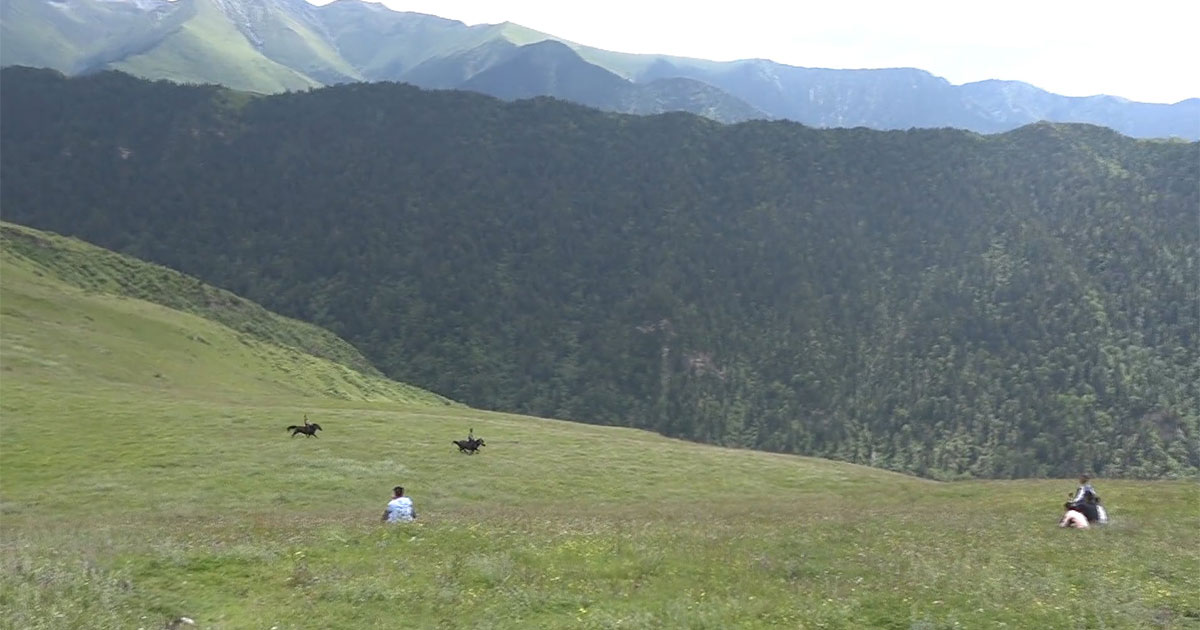Horse racing has long been part of traditional Tibetan culture, and even appears in the epic of King Gesar—one of the world’s longest—which dates to the eleventh or twelfth century. Horse-racing festivals are an especially distinctive feature among Tibetan people. They typically take place in the summer months: when blooming flowers dot lush meadows in the vast grasslands of the Tibetan Plateau, when horses and yaks are strong, and when Tibetans enjoy the warm weather by dancing, singing, picnicking, and camping.
Every horse-racing festival is different. Across the plateau, some take place at the village level, some at the township level, and some at the county or prefectural level. Generally, the higher the level, the greater the structure and the richer the program.

Among the most popular horse-racing festivals are those in Lithan, Nagqu, and especially Yushu. The latter is held every summer from July 25 to 31, attracting Tibetans from all regions of the country in their most beautiful traditional clothes. Likewise, they dress their finest horses in their best outfits. The Yushu Horse-Racing Festival begins with a grand opening ceremony featuring songs, dances, and various folk activities. The schedule includes archery, handicrafts, and Tibetan opera performances, but horse racing is always the most exciting event.
Horse-racing festivals may include different types of competition, such as speed racing, musket shooting, and body dragging. The musket-shooting races begin with the shot of a pistol into the air; as the smoke rises, two riders gallop toward the finish line. The first rider gallops at full speed, which enables the second rider to concentrate on demonstrating his horsemanship. Without a horse and riderjust ahead, the second horsewould have no sense of direction and might slow down. As the second rider is about to reach his destination, he raises his musket into the air, then gracefully swings it right to left, and even passes the musket from under the horse’s neck or belly to impress the audience. As he approaches the paper target, the second rider must perfectly time his musket shot in order to shatter the paper into many pieces, which float in the air. Some riders fire their muskets too early or too late, leaving the paper target untouched after the smoke clears.






More demonstrations of traditional horsemanship continue after the musket shooting. By hooking their pointy boots in the stirrups, the best riders are able to let their body fall from the saddle so that they are dragged by their horse across the smooth, grassy meadow. However, some riders remain in their saddles and others fall off their horses—causing audience members to laugh and cheer with calls of “ki he he,”which reference the epic of King Gesar and his formidable troops on ancient battlefields.
The horse is the favorite animal of many Tibetan nomads, who worship strength, bravery, and manhood. Horse-racing festivals are thus not only a form of entertainment, but also a way to celebrate Tibetan folk culture and promote the local economy by attracting tourists from all over the world.




